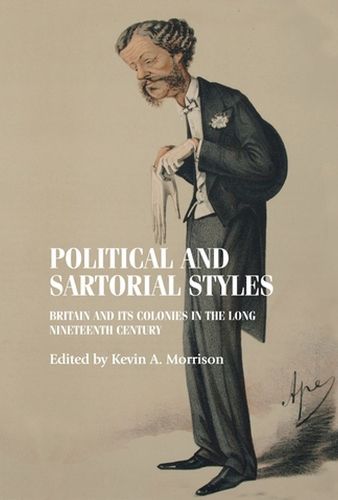Readings Newsletter
Become a Readings Member to make your shopping experience even easier.
Sign in or sign up for free!
You’re not far away from qualifying for FREE standard shipping within Australia
You’ve qualified for FREE standard shipping within Australia
The cart is loading…






Starting with the premise that clothing is political and that analysing clothing can enhance understanding of political style, this collection explores the relationships among political theory, dress, and self-presentation during a period in which imperial and colonial empires assumed their modern form. Organised under three thematic clusters, the volume’s chapters range from an analysis of the uniforms worn by West India regiments stationed in the Caribbean to the smock frock donned by rural agricultural labourers, and from the self-presentations of members of parliament, political thinkers, and imperial administrators to the dress of characters and caricatures in novels, paintings, and political cartoon. With its interdisciplinary approach, the book will appeal to nineteenth-century cultural and social historians and literary critics as well as advanced undergraduate and postgraduate students whose research and teaching interests include gender, politics, material culture, and imperialism. – .
$9.00 standard shipping within Australia
FREE standard shipping within Australia for orders over $100.00
Express & International shipping calculated at checkout
Starting with the premise that clothing is political and that analysing clothing can enhance understanding of political style, this collection explores the relationships among political theory, dress, and self-presentation during a period in which imperial and colonial empires assumed their modern form. Organised under three thematic clusters, the volume’s chapters range from an analysis of the uniforms worn by West India regiments stationed in the Caribbean to the smock frock donned by rural agricultural labourers, and from the self-presentations of members of parliament, political thinkers, and imperial administrators to the dress of characters and caricatures in novels, paintings, and political cartoon. With its interdisciplinary approach, the book will appeal to nineteenth-century cultural and social historians and literary critics as well as advanced undergraduate and postgraduate students whose research and teaching interests include gender, politics, material culture, and imperialism. – .